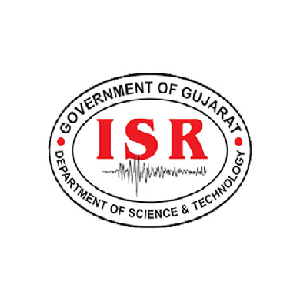Tectonic Climate and Extreme Events (TeCEE) Group
Laboratory Analytical Instruments:
- Particle Size analyzer
Make: Malvern Panalytical
Application: In environmental and geological studies, particle size analysis is essential for understanding soil particle size which provides information about sediment transport, and hydrodynamic conditions. It is studied in natural systems for Palaeoclimatic, palaeoenvironmental studies and engineering applications.
- ICP-MS (Inductively Coupled Plasma Mass Spectrometry)
Make: Agilent
Application: Inductively Coupled Plasma Mass Spectrometry (ICP-MS) is a very popular technique for the analysis of trace elements in a wide range of samples. it provides detailed quantitative estimation of the elemental composition of a sample. It is a very sensitive technique and can measure trace levels of elements (upto ppt) in various types of samples (e.g., water, soil, air, biological tissues, food, etc). It has wide range of application in diverse fields like environmental monitoring, geochemistry, pharmaceuticals, and clinical research.
- XRF Analyzer
Make: Rigaku
Application: Energy dispersive X-ray fluorescence (EDXRF) spectroscopy provides one of the simplest, most accurate and most economic analytical methods for the determination of the chemical composition of many types of materials. The technique is non-destructive, requiring little if any sample preparation, and is suitable for almost all sample types. EDXRF analysis can be employed to measure a wide range of atomic elements, from sodium through uranium, while providing detection limits from low parts-per-million (ppm) to high weight percent (wt%). It is routinely used in palaeoclimate, optical dating, earthquake, mineral related research.
- Magnetic Susceptibility System
Make: AGICO
Application: The MFK1 Kappabridge is a multifunctional, high-precision instrument used for measuring magnetic susceptibility of rocks and anisotropy of susceptibility (AMS). It is used in palaeoclimatic and mineral research.
- CNS Analyzer
Make: ELEMENTAR
Application: The UNICUBE (Elementar) is designed for simultaneous carbon, nitrogen, and sulfur analysis in solid and liquid samples, ranging from 0.1 mg chemical substance to 15 mg of liquid fuel to 1 g of inhomogeneous soil. The instrument is used for absolutes measurements of Carbon, Nitrogen and Sulfur contents in natural/ archaeological/ environmental samples for diagnostic purpose for radiocarbon dating as well as for using the data for geochemical interpretations. It is capable of measuring total, inorganic and organic carbon content in soil samples.
- OSL (Optically Stimulated Luminescence) reader
Make: RISO
Application: The Risø TL/OSL reader enables automated measurements of thermoluminescence (TL) and Optically Stimulated Luminescence (OSL) signals. As the measurement system is highly sensitive and includes a reference radiation source, it is widely used for determining radiation doses in natural and artificial materials with applications in geological and archaeological dating, forensic and accident dosimetry, and radiation protection.
- Dose Rate System
Make: MiDose
Application: MiDose+ aims to advance knowledge in environmental, earth, and archaeological sciences by providing tools that enable precise measurements of environmental radionuclide concentrations. It is used by geologist and archaeologist to assess past timelines using radiation measurements.
- Stereoscopic Microscope:
Make: GETNER
Application: A stereoscopic microscope provides a three-dimensional (3D) view of a sample. It is being mostly used for micro-paleontological studies for examining foraminifera in various soil samples for palaeoclimatic, palaeo environmental, palaeotsunami studies.
Field survey instruments:
- GNNS (Global Navigation Satellite System)
Make: Leica, Trimble
Application: GNSS includes multiple satellite constellations that work together to provide accurate location and time information worldwide. Permanent and campaign mode stations network of ISR covers whole Gujarat, providing fine insights about ongoing crustal deformation along various faults and segments.
- DGPS / RTK system
Make: Stonex, Leica
Application: DGPS (Differential Global Positioning System) is an enhanced version of GPS (Global Positioning System) that improves the accuracy of positioning data. It is fast yet accurate instrument to create digital elevation models at site specific scales as well as topographic variations with mm level accuracy.
